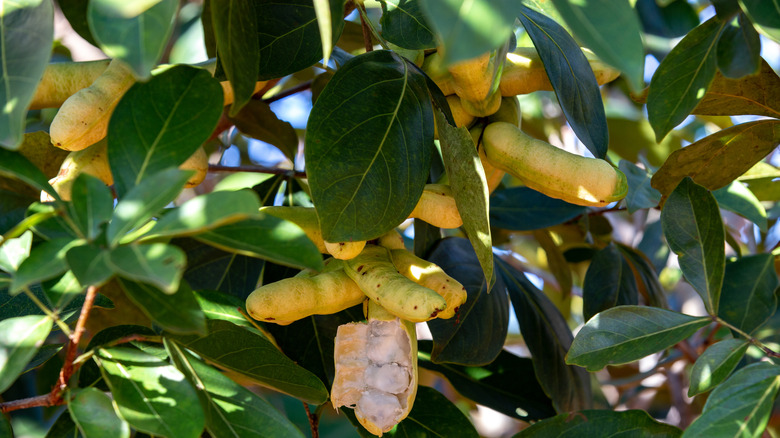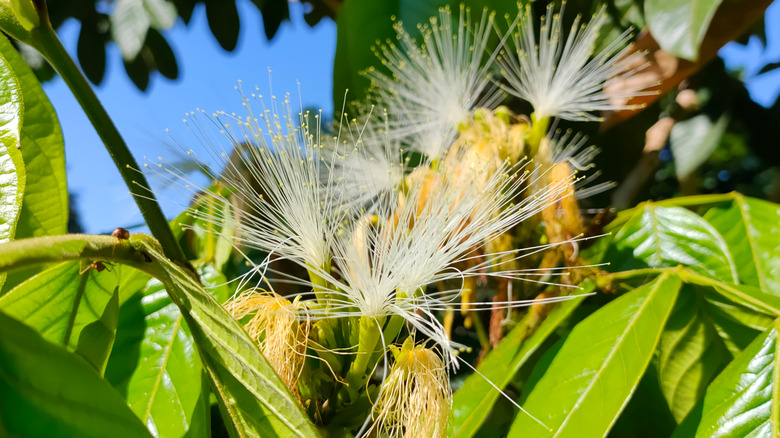This South American Bean Tastes Just Like Ice Cream
We all scream for ice cream, do we not? Smooth, creamy, rich, and sometimes studded with wonderful mix-ins or toppings, ice cream is a worldwide treat. On a seemingly disparate note, beans are an amazing protein source, and the myriad types of legumes have been consumed and enjoyed for years and years. Medium notes that beans may have been consumed as far back as 10,000 years ago. Beans and ice cream exist in totally separate realms, though, right? ... or do they? Read ahead to find out about one very, very interesting bean.
As reported by Atlas Obscura, there is actually something called an ice cream bean. Yep, you read that correctly! These beans are the size of lima beans and are wrapped in a white, fluffy casing inside their pods. The white covering resembles cotton candy and apparently tasted similar to vanilla ice cream. Atlas Obscura explains that this is how the nomenclature came to be.
How are ice cream beans eaten?
Imaging the non-natural cotton candy or ice cream existing in an entirely natural setting is a fascinating juxtaposition, but it's one that is totally legitimate throughout Central and South America at large. The beans can be found throughout Peru, Ecuador, Columbia, and Brazil.
As Atlas Obscura notes, the trees that grow ice cream beans are called Inga trees, and they are so tall that they're often planted for both shade and timber, so many farmers throughout the region tend to have quite a surplus of these unique beans. In addition, the beans themselves are quite large: They can range in size from about 1 foot to up to 6 feet! They're enjoyed raw by locals, as well as by animals in nearby areas. Of course, some local chefs are also known to create unique concoctions with the beans, incorporating their unique flavor into nontraditional dishes in both savory and sweet manners, or sometimes even in beverages. A specialty latte made with an ice cream bean pure or syrup? Sounds great to us!
The saying really is true: You learn something every day.

